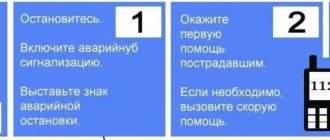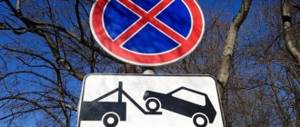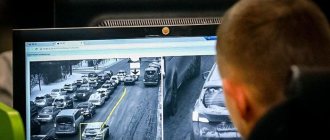Legal standards
The driver's liability for the death of participants in an accident is determined by current regulations. Punishment depends on many aspects, the main one being the severity of the damage caused.
Criminal Code
Article 264 of the Criminal Code of the Russian Federation on road accidents with a fatal outcome contains information about what the culprit faces in a fatal accident.
This regulatory document describes the penalties that are provided for the deprivation of life of a road user through negligence or against the background of intentional actions. Here are the main signs of a crime, on the basis of which the motorist is considered guilty. The article of the Criminal Code of the Russian Federation on road accidents with a fatal outcome also considers measures against persons who provoked road accidents with several deaths.
Determination of guilt
Not all road fatalities are considered crimes. For example, there are known situations when drivers of vehicles experienced cardiac arrest while driving, as a result of which the car lost control. In this case, third parties who were in close proximity to the victim cannot be held to blame for the accident.
It is important to know! To confirm the crime, law enforcement officers are conducting a comprehensive investigation. It involves a number of activities and examinations to determine the relationship between the driver’s actions and the results of the incident.
Article of the Criminal Code of the Russian Federation Fatal accidents
Every car is a source of increased danger. Even a slight contact with a pedestrian or a collision with a car can cause injuries, bruises and fractures. In the most serious accidents, the risk of severe health consequences, including death, increases significantly.
Sanctions for fatal road accidents are provided for in Article 264 of the Criminal Code of the Russian Federation. To hold people accountable, the following rules are taken into account:
- death can occur immediately at the moment of a collision or impact, or after a long period of time (in an ambulance, in a hospital, etc.);
- For criminal punishment, a cause-and-effect relationship between the driver’s unlawful actions and the death of the victim must be confirmed;
- according to Art. 264 of the Criminal Code of the Russian Federation, measures of influence are prescribed only in the absence of intent to cause the death of a pedestrian or other participant in an accident.
Note! Criminal liability for a fatal accident will arise under other articles of the Criminal Code of the Russian Federation if intent is established in the driver’s actions. In this case, we will be talking about murder or another violent crime.
If death occurs immediately during the accident, death is recorded by the staff of a medical institution or ambulance. Medical personnel are called to the scene of an accident by drivers or other eyewitnesses. The obligations of participants in a road incident to provide primary medical care or call medical personnel are recorded in the traffic rules, and their improper fulfillment will be considered as part of a criminal case.
Find out more Reversing according to traffic rules: when allowed and prohibited, fine
The victim may die much later than the accident, and the time period can range from several hours to several months. In this case, law enforcement agencies will have to establish what injuries caused death and what caused them.
How to determine the cause of an accident?
Liability for a fatal accident, including if a pedestrian is hit to death, will follow only if there is a cause-and-effect relationship. Its installation proceeds as follows:
- the fact of bodily injury or death is recorded in medical documents (for example, a death certificate is issued);
- to establish the nature of the damage and the causes of its occurrence, a forensic examination is appointed - an examination of the deceased citizen is carried out, the exact nature of the damage, the causes and time of its occurrence are established;
- the expert report must contain a conclusion as to whether the injuries from the accident caused the death of the victim, or whether the death was caused by other factors.
The culprit of a fatal accident will not be punished if the cause of death is another circumstance. For example, even with treatment for injuries received, another serious illness may arise, or a previously established diagnosis may worsen. In addition, death may occur due to the fault of medical personnel who provided care of inadequate quality. All these points must be identified and substantiated by an expert.
The expert's opinion will be the main evidence in a criminal case. To exercise the right to defense, the accused driver can use the services of a lawyer, including at the scene of the accident. With the help of a lawyer, you can prepare a list of questions for the examination and submit a petition for the appointment of repeated or additional expert actions.
Causes of fatal accidents
According to statistics, tragedies most often occur due to gross violations of traffic rules. Generally accepted rules, the observance of which is mandatory for every driver, are intended to reduce the number of accidents in general. Accidents with fatalities are evidence that traffic rules were violated.
Factors surrounding the incident include:
- Driving a vehicle while intoxicated;
- Speed limit violation;
- Driving at a prohibiting traffic light;
- Failure to comply with the rules for crossing pedestrian crossings;
- Poor quality of road surface and markings;
- Technical malfunctions of the vehicle;
- Failure to use seat belts.
Thus, numerous reasons can lead to death on the road. Provoking factors are determined by studying the scene of the incident. In the future, these data affect liability for fatal accidents.
How are fatal accidents investigated?
According to criminal theory, an act or inaction of a person can be regarded as a crime only if there are four mandatory components: subject, object, objective side, subjective side.
To bring a person to criminal liability under Article 264 of the Criminal Code, it is necessary to confirm the presence of the following factors:
- Subject is a person who can be held criminally liable under the current law. For an accident resulting in death, only an individual who is fully sane can be held criminally liable. If a person has a mental disorder, but was issued a driver's license, an additional official investigation is conducted to identify the officials who issued the driver's license without legal grounds.
- The object of the crime is public legal relations in the field of road safety, therefore the article states that a person who has committed a violation of traffic rules or the operation of vehicles, which was the result of a traffic accident, is held accountable.
- The objective side can manifest itself in the form of human action or inaction. An action is considered to be active behavior aimed at violating traffic rules. For example, driving a vehicle while intoxicated. Inaction is ignoring the current situation when the driver could and should have prevented the accident.
- The subjective side is a person’s attitude towards a fatal accident. An accident can be caused either by direct intent or by negligence.
In addition, the following mandatory factors are taken into account:
- the norm applies to mechanical vehicles, including cars, trams, motorcycles and other vehicles, the propulsion of which requires mechanical force;
- confirmation of the cause-and-effect relationship between the violation and the resulting consequences is mandatory.
Citizens are subject to punishment under Part 3 of Art. 264, if as a result of violation of traffic rules or requirements for the operation of vehicles due to negligence, the death of the victim occurred. Such actions provide for the following sanctions:
- forced labor for up to four years;
- imprisonment (punishment for an accident is up to five years).
Mandatory punishment for the driver includes additional sanctions in the form of deprivation of the right to drive a vehicle for up to three years.
If death occurs due to negligence in an accident, the violators are held accountable under Part 4 of the article if the violator was intoxicated (alcohol, drugs, psychotropic drugs) or left the scene of the accident. The following penalties apply for such actions:
- imprisonment for up to 12 years with a ban on driving for up to three years.
If two or more victims died as a result of an accident due to negligence, then the offender is subject to the penalties provided for in Part 5 of Article 264:
- forced labor for up to five years;
- imprisonment for up to seven years.
An additional penalty in the form of deprivation of the right to drive a vehicle for up to 36 months is mandatory.
If the offender, while intoxicated, committed a fatal accident in which two or more people died, or fled from the scene of the crime, he faces imprisonment from eight to 15 years with deprivation of the right to drive up to three years.
Mentions in the article of committing a crime while intoxicated or leaving the scene of an incident without permission cannot be additionally regarded as aggravating circumstances. According to criminal law, additional aggravating factors will be the following:
- repetition (relapse);
- the cause of the accident with fatalities was the presence of technical malfunctions of the vehicle, which the driver knew about in advance;
- driving without a driver's license;
- The offender is a minor.
Each of these factors must be documented and attached to the materials of the criminal case regarding the accident.
The judge is considering the possibility of bringing to justice with a more lenient punishment the violator who is dependent on young children. A situation where the driver independently contributes to solving the case, and also voluntarily compensates for the damage caused (at least partially), can also serve as a mitigating circumstance.
Conducting pre-trial proceedings in such cases has a number of features:
- A potential perpetrator of negligent homicide cannot be questioned as a witness. This is due to the fact that the witness is liable for perjury, as well as for refusing to testify in the case. The suspect does not have such responsibility, therefore, by interrogating the offender as a witness, his right to self-defense is initially violated.
- When recording the scene of an incident, photographic recording, video recording, sketching of physical diagrams, and measurements with the participation of witnesses are made. Further prosecution and punishment of the offender largely depends on the qualified recording of the scene of the incident.
- Regardless of whether the victim has signs of life, an ambulance is called to the scene, which must either ascertain the cause of death or send the victim to the nearest medical facility to provide him with first aid.
The Code of Criminal Procedure stipulates that there is no specific period during which the injured party can file a statement with the police or file a civil claim with the court. This can be done even after several years, but the correctness and completeness of recording the violation, as well as the reliability of the examination results, depend on the timeliness of contacting the police.
As for the duration of consideration of a case in court, it can take several years, which is associated with the severity of proof, as well as the accompanying features of a particular case.
The investigator’s task is to establish two types of cause-and-effect relationships:
- Between a traffic violation and an accident. Failure to comply with traffic rules or operation of faulty vehicles does not always become the cause of a traffic accident. It happens that a driver is involved in an accident, but the cause of the accident is the unlawful actions of another participant. Thus, the driver who committed a traffic violation is innocent of the incident.
- Between the accident and the resulting consequences, that is, the death of the victim. If it is established that the death of a person did not occur as a result of an accident, then the offender will be held accountable under another article of the Criminal or Administrative Code of Russia.
In total, the following types of examinations are carried out at the pre-trial investigation stage:
- technical;
- medical;
- judicial
Technical ones include assessing the serviceability of the vehicle, assessing the braking distance and the position of vehicles after an accident. Experts should also analyze possible ways to prevent an accident.
Forensic examinations include forensic medical examination, which evaluates the cytology and immunology of the deceased person. The expert's conclusion contains information about whether the injured party was under the influence of psychotropic, alcoholic, or narcotic drugs.
As for the medical examination, this is a simple examination necessary to assess the condition of the offender at the time of the accident.
When initially visiting the scene of an accident, traffic police officers are required to first write down the contact information and personal information of all witnesses and eyewitnesses present at the scene of the accident. This is necessary so that if individual witnesses leave the scene of the accident, they can be subsequently invited to carry out investigative actions during the pre-trial investigation.
Investigators conducting pre-trial investigations work with witnesses. It must be remembered that witness testimony is a subjective opinion that can be deformed under the influence of personal experiences, health problems (for example, vision), and personal attitudes towards the participants in the incident.
To investigate a case of an accident involving victims, 2 months are given from the date of the ruling (Article 162 of the Code of Criminal Procedure of the Russian Federation). During this period, research is carried out to further close the investigation or transfer it to the prosecutor's office.
If people injured in an accident received moderate or severe injuries, then the period can be extended to six months based on a report from the investigator. Copies of the document are given to each participant in the incident. No compensation will be paid until all activities are completed.
Injured persons have the right to receive compensation if, when applying for a CASCO policy, the contract provided for payment for the insured event that occurred (Article 10, paragraph 3, Law of the Russian Federation No. 4015-1 of November 27, 1992).
If there is such a point, then immediately after the traffic police officers record the incident, the victim needs to visit a medical facility. All receipts must be collected, which will further confirm expenses.
As soon as the victim undergoes treatment, he is supposed to visit the CASCO insurance company and give the agent a medical report with receipts.
For information
In addition to the main expenses, the organization can make an additional payment (Article 10, paragraph 6, Law of the Russian Federation No. 4015-1 of November 27, 1992). Its size depends on the nature of the injury. Each insurer has a special table that shows such payments as a percentage for victims of road accidents.
Penalties
By reading Article 264 of the Criminal Code of the Russian Federation on road accidents, you can find out what the driver faces if he is found guilty of the crime he is charged with. For death as a result of an accident, even through negligence, a motorist will face civil and criminal liability.
Attention! In the first case, we are talking about compensation for damage to the injured party. If bodily injuries are caused that lead to the death of the victim, the driver will have to compensate for moral damages. Typically, such a payment is made by the insurance company where the culprit took out a compulsory motor liability insurance policy.
Criminal liability provides for the following punishment options:
- If the driver was sober. Imprisonment for up to 4 years or correctional labor, confiscation of rights for up to 3 years. The opportunity to hold certain positions is excluded.
- If the culprit is drunk. In such cases, the penalty is imprisonment for up to 7 years. The minimum period of restriction of freedom is 2 years. After release, the driver will be prohibited from driving and holding certain positions for another 3 years.
- Road accident with several fatalities. If a traffic violation led to the death of more than one person, but the culprit was sober, he faces up to 7 years in prison. In this case, many circumstances are taken into account, including the number of victims. If the driver was drunk, then for an accident resulting in the death of a person they will be given up to 9 years.
It should be noted that the culprit of the accident can be considered drunk not only if he drank alcohol before the incident. If he refuses to undergo a medical examination, he is automatically considered drunk.
What factors does punishment depend on?
There is no doubt that in the event of the death of a participant in the incident, the guilty person will suffer a well-deserved punishment. An exception can only be if the culprit himself died.
This situation is regulated by the Criminal Code of the Russian Federation, to be more specific, Article 264 of the Criminal Code of the Russian Federation. Only the court can determine the specific type of punishment for the guilty person. In this case, the whole situation as a whole, the reasons for the actions of the guilty person, and his attitude to what happened will be taken into account.
Also, all the actions of the guilty person, from the very moment of the incident to the delivery of a court decision, will be decisive. For example, if a person actively cooperated with the investigation, admitted his guilt, repented, and provided assistance to the relatives of the deceased, then this will definitely be a mitigating circumstance. There are also cases where criminal liability does not arise at all. This is possible if the parties have reached reconciliation. Let's look at the situation in more detail.
Aggravating and mitigating circumstances
When carrying out investigative measures, factors that accompanied the accident are taken into account. In many cases, they influence the outcome of the case and the final verdict against the culprit. For these purposes, a set of examinations and checks is carried out aimed at determining the details of the incident. If it is proven that the driver did not have the opportunity to prevent the collision, he may be released from criminal liability.
Mitigating circumstances include the following:
- Pregnancy;
- Having small children or close relatives who need care;
- Voluntary compensation for material and moral damage.
It is important to know! Sometimes unfavorable weather conditions and violations of traffic rules by the victims are recognized as mitigating circumstances. Also included in this category are poor quality pavement, improper operation of traffic lights, and lack of road signs.
A more severe punishment is faced if there are aggravating factors:
- The driver attempted to escape from the scene of the accident;
- The culprit was driving with an invalid license or without it;
- The accident occurred due to exceeding the speed limit;
- The driver did not allow a pedestrian to pass at a zebra crossing or drove through a prohibiting traffic light;
- Minors were injured in the accident;
- The culprit was detained in a state of intoxication.
Also considered an aggravating circumstance are cases of accidents involving a driver who has similar drives in the past. The above criteria indicate that the culprit is a persistent offender and deserves punishment. Thus, the consequences of a fatal accident for a driver depend on the presence of mitigating and aggravating circumstances.
Procedure for investigating an accident
What is the procedure for investigating an accident at an enterprise?
- First of all, an employee of the enterprise who is responsible for safety must come to the scene of the traffic accident. Therefore, it is in the driver’s best interests to immediately report the collision to the management of his organization.
- Next, the enterprise employee draws up his documents about the accident. An accident investigation report can be drawn up either at the scene of the accident or later. The main thing is that the authorized person enters all the data about the circumstances of the traffic accident at the scene of the accident. The preparation of this document is mandatory, even though the traffic police officer will have a similar act ready.
- A company representative has the right to interview witnesses about the circumstances of the accident. Such a check of the testimony will make it possible to determine the driver’s guilt in the incident in order to hold him accountable in the future or, on the contrary, remove all suspicion from him.
- The next step is filming the scene of the incident. As a rule, the employee is limited to photographs, but for the investigation of complex accidents, video recording may be required in order to have a complete picture of what happened in the future.
- A company representative has the right to contact traffic police officers to clarify the necessary information.
Upon completion of the preparation of documents by the road inspection staff, copies of the resolution, protocol and certificate of the accident are issued to the representative of the company of the employee involved in the accident. Documents are handed over to the employee against signature, but in some cases it may be necessary to affix an additional stamp “Copy is correct” (if this circumstance is provided for by the internal regulations of the legal entity).
Is reconciliation possible?
If the parties reach an agreement, the person responsible for the incident can avoid punishment. However, this is only realistic if the victims do not have any claims against the driver. The motorist who caused the fatal accident must pay compensation, after which a reconciliation agreement may be possible.
Attention! The victim side submits a corresponding application to the court or law enforcement agencies. The concluded agreement must reflect all the reasons and details of such a decision. As a result of this, investigative measures against the perpetrator are terminated, and he is released from punishment.
Fatal accidents are a common occurrence that occurs due to non-compliance with traffic rules and other factors. In most cases, drivers are found guilty of the incident. There is criminal liability for the death of a person due to a road accident. The punishment is a prison term, correctional labor and a number of other restrictions.
When can reconciliation with the relatives of the deceased be used?
Some perpetrators, after committing an accident that led to the death of its participants, repent of their actions. Others simply do not consider themselves guilty. Regardless of this, anyone at fault in the accident can use reconciliation with the family of the deceased.
To commit such actions, the culprit must not have any criminal record, only then can he avoid imprisonment. At the same time, relatives have the right to indicate their amount of compensation; there are no restrictions on this by law.
Of course, no amount of money can replace a loved one, but some understand that the incident occurred by chance and therefore accept reconciliation. However, there are also cases when both financial compensation and imprisonment for different periods are awarded.
Accidents are always bad. Such an incident is accompanied by the emergence of many problems, especially if there are fatalities in the accident. Therefore, it is highly recommended not to violate traffic rules.
According to current legislation, each violator must have the opportunity to compensate for the damage caused. This mechanism is implemented through reconciliation between the offender and the relatives of the deceased person. For its part, the violator is obliged to voluntarily compensate for material and moral damage, which can be done before the start of the trial.
After this, the participants contact a lawyer, with whom they draw up a reconciliation agreement between the parties. If such a document has not been drawn up, the issue of reconciliation is raised by the judge after the start of the trial. In this case, the injured party is asked to declare the amount of damage caused, and the offender is asked to voluntarily pay it off.
When an accident with a fatality is classified as a crime
The culprit receives punishment only if someone died as a result of the accident. However, it is not always possible to determine on the spot whether there are dead or missing. This is not always possible to determine at the scene of the accident, as cases vary.
For example, doctors cite cases where the victims’ lives were not in danger and they felt fine, but after a short period they died. If this was related to the accident and there is a direct connection, then the accused will be punished. Otherwise, punishment can be avoided.
There have also been cases when a person was in serious condition after an accident, but survived. However, then the punishment is still provided, although not as severe as for death. This is regarded as causing grievous bodily harm.
Some drivers with a weak heart may become frightened before a collision, causing a heart attack and death.
According to Article 264 of the Criminal Code of the Russian Federation, the culprit is the driver who violated traffic rules and because of this there was an accident with one or more deaths. In this case, the guilty person is held criminally liable. It is important that death occurred precisely because of the blow, and not because of fright or a heart attack. The driver must not intentionally commit an accident with malicious intent, otherwise it will be regarded as murder.
The procedure for a driver in an accident with victims
When an accident occurs, the most important thing is to remain calm, be composed and do the right thing. The lives of the injured people depend on how adequately the driver behaves in an accident.
In case of an accident with victims, the following actions are taken:
- The car's engine turns off and the hazard warning lights go off.
- The condition of each victim is determined and first aid is provided. Injured persons remain on site under supervision.
- An ambulance is called by cell phone. Numbers - 030, 03, 112.
- A call is made to the traffic police service - 020, 02, 112. The address of the incident is clearly and correctly stated. The site is not abandoned and no items are moved until the inspectors arrive.
- To prevent other accidents, an emergency stop sign is placed.
- If there are witnesses, their personal data, telephone numbers and addresses are recorded. With their consent, they are interviewed, their testimony is recorded and signed.
- Until the traffic police arrive, photographs of the accident and braking marks are being taken.
Attention:
Recordings from the DVR must be saved. They can help the driver during the trial. You also need to carefully read the papers that are drawn up by inspectors.
After completing the basic documents about the accident, the injured person should immediately exercise his rights. He needs to do the following:
- Undergo a forensic examination to document injuries.
- Provide the insurance agent with documents confirming the damage received in the accident.
- If an employee of an institution underestimates the actual amount required for restoration, an independent assessment of the damage by an outside expert is carried out.
- Within three weeks, the compensation amount is transferred to the victim’s account.
- If the insurance company does not want to pay the money or is ready to transfer only part of the funds, the victim has the right to go to court.
The following documents are provided to the insurance agent for consideration:
- statement;
- passport;
- driver's license;
- vehicle registration certificate;
- PTS;
- notification of an incident;
- protocol;
- current account information.
Attention:
Before handing over the signed documentation to the insurance company specialist, it is recommended to photograph them. This is necessary in order to later see what the victim mentioned in the papers. And also prove the fact of their delivery to the agent.
The list of mandatory events depends on the participant. Traffic police officers are required to perform the following actions:
- fencing the scene of the incident;
- obtaining data from all participants, including witnesses and eyewitnesses;
- full recording of road accidents;
- calling an ambulance;
- making a decision to examine the offender;
- arrest of vehicles and their placement at a special site of the police department.
The offender, for his part, must take an active part in recording the circumstances of the accident, even when all documents are drawn up by traffic police officers. This is necessary in order to avoid inaccuracy, as well as deliberate or careless falsification of the circumstances of the criminal case. Lawyers strongly recommend at this stage to involve a paid or free lawyer who, knowing the legal specifics, will be able to monitor the progress of recording the accident.
Close relatives of the deceased person must, for their part, take measures aimed at preserving evidence: DVR recordings or videos from mobile phones of participants, witnesses, and eyewitnesses. It would be useful to record the details of all witnesses to the incident, who can provide important information about the mechanism of its commission.
According to the explanation of the Plenum of the Supreme Court of the Russian Federation, the person who was driving at the time of causing death as a result of an accident is held accountable. This means that the owner of the vehicle, if he was not driving the car at the time of the accident, is not held liable either financially or legally. This includes the withholding of MTPL payments in the event of death in an accident.
If the vehicle was not driven by its owner, traffic police officers additionally check the legal grounds for the person being behind the wheel. If a person is included in the insurance policy and legally received documents for the car from the owner, he is held accountable, but the owner of the car is not punished.
If the owner of the vehicle violated the law by transferring the right to drive the car to a third party without legal grounds, the owner is held accountable, but only for transferring the right to drive the vehicle. Under no circumstances should he compensate for the harm caused to the relatives of a deceased person.
The law provides that the initiation of a criminal case under articles of the Criminal Code of the Russian Federation occurs under the following circumstances:
- violation of traffic rules or rules for operating vehicles by drivers;
- violation of traffic rules by pedestrians or vehicle passengers;
- identifying cause-and-effect relationships between the violation and the consequences;
- the culprit fled the scene of the accident;
- the occurrence of serious consequences in the form of serious harm to health or death of the victims.
The Criminal Procedure Code of the Russian Federation stipulates that conducting an investigation is the responsibility of a police department investigator. It is extremely rare that when there are a large number of victims, as well as when police officers are involved in an accident, the investigation is carried out by the regional investigative department.
The decision to initiate a criminal case is made by the head of the investigative unit, to whom the initial materials of the accident were transferred. After analyzing the collected materials, a resolution is made and the case is transferred for registration to the Unified State Register of Pre-trial Investigations. At the same stage, an investigator is identified who will conduct further pre-trial proceedings.
Mitigation of punishment
The punishment for the culprit of a fatal accident can be mitigated if you correctly develop a defense strategy. An experienced lawyer representing the interests of the culprit will be able to make the most of legal tools - to justify mitigating circumstances:
- raising young children guilty;
- the driver is the carer of a person who needs care;
- minor traffic violation;
- presence of pregnancy;
- committing a traffic violation for the first time;
- providing assistance to the victim.
Important!
Russian legislation allows you to avoid liability through reconciliation with the relatives of the deceased (Article 76 of the Criminal Code of the Russian Federation). You can negotiate with them on compensation for damage and obtain exemption from criminal liability.
If it is not possible to reach an agreement with the relatives of the deceased, the culprit will receive a criminal record, and the punishment will be determined by the court, taking into account many subtleties. The role of the defense attorney is to seek mitigation of the defendant's sentence at each stage of the criminal proceedings.
When can reconciliation with the relatives of the deceased be used?
If the driver committed an accident, as a result of which a person died, and does not want to be punished by imprisonment, you can reconcile with the relatives of the deceased. In this case, a mandatory condition: the perpetrator has no criminal record of any severity. The amount of compensation that the relatives of the deceased can ask for depends entirely on their wishes.
Judicial practice in road accidents involving a pedestrian
Violation of the Traffic Rules or the rules for operating a vehicle, resulting in minor harm to the health of the victim, entails the imposition of an administrative fine in the amount of two thousand five hundred to five thousand rubles or deprivation of the right to drive vehicles for a period of one to one and a half years. 2. Violation of the Traffic Rules or the rules of operation of a vehicle, resulting in the infliction of moderate harm to the health of the victim, shall entail the imposition of an administrative fine in the amount of ten thousand to twenty-five thousand rubles or deprivation of the right to drive vehicles for a period of one and a half to two years. Notes :1. Causing minor harm to health should be understood as short-term health disorder or minor permanent loss of general ability to work.2.
Fatal accident with a pedestrian
Moral damage Regardless of whether the accident occurred on the sidewalk, at a pedestrian crossing or in the wrong place, although the injured person himself may be found guilty, he has the right to go to court demanding compensation from the driver for moral damages.
Before going to court, you should try to resolve the conflict out of court. Of course, if the pedestrian is found not guilty, the insurance company will compensate for material damage and injury to health.
However, insurance policies do not provide compensation for moral damage, so such payments are made exclusively in private.
Table 3.











